|
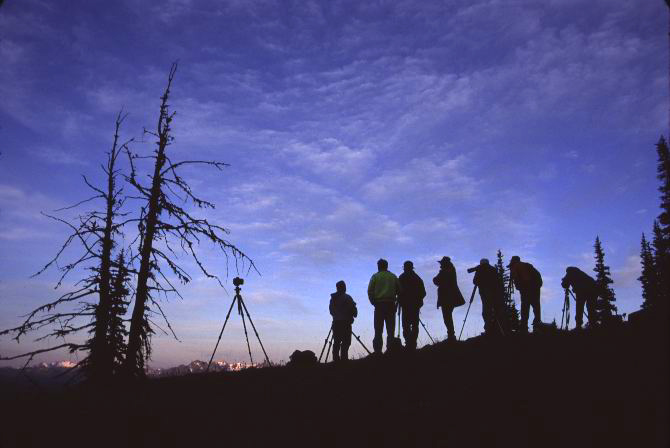
A TOUR GUIDES VIEW OF
OLYMPIC
NATIONAL PARK
By
Jim Moerschel
Tucked away in the most upper, Northwest region
of The United States is one of the most beautiful
and diverse National Parks in the world. Composed of over 900,000 acres,
with 95% of it designated as
pure wilderness, 50 miles of pristine coastline, towering mountains,
alpine meadows and deep, mysterious
rainforest give this Washington State Park a distinct uniqueness.
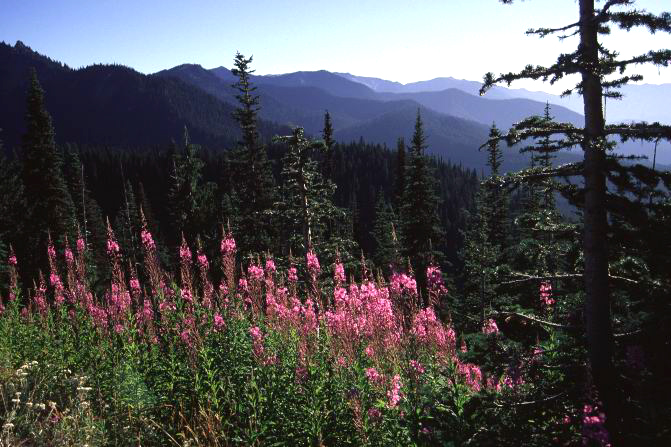
Olympic National Park is one of my favorite places. It is a park that
easily satisfies the creative
spirit of any serious nature photographer. There is wildlife everywhere.
Deer, marmots, bears, elk,
small mammals and plenty of birds can be found here. Wildflowers carpet
the alpine meadows in summer
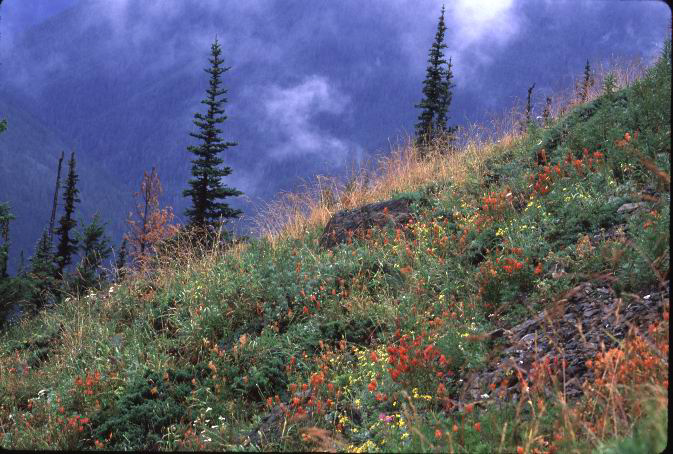
and the seashore is spectacular with towering “sea-stacks.”
A walk into the temperate rainforests will
lead you to some of the most photogenic waterfalls that plunge off vertical
cliffs amidst a green background.
Giant ferns are everywhere amongst giant trees. Olympic has several
prominent species of trees. Douglas
Fir, Western Hemlock, Sitka Spruce, western Red cedar, Sub Alpine Fir,
Alaska Cedar, and grand
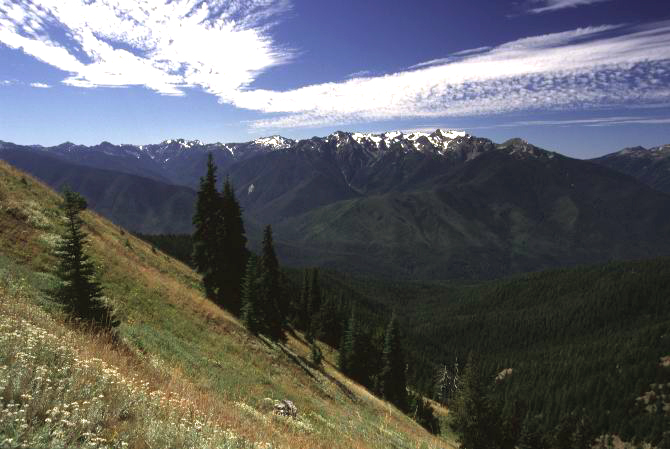
Fir stand
tall in this fertile land. A Grand Fir is the tallest tree in the park,
standing 251 feet. A Douglas Fir is nextat 212 feet, with a Western
Hemlock at 202. With all this abundance of photographic subjects it
would seem to be an easy place to come and loadup ones portfolio in
just a few days. But that is just not the case. I’ve been here
several times and have
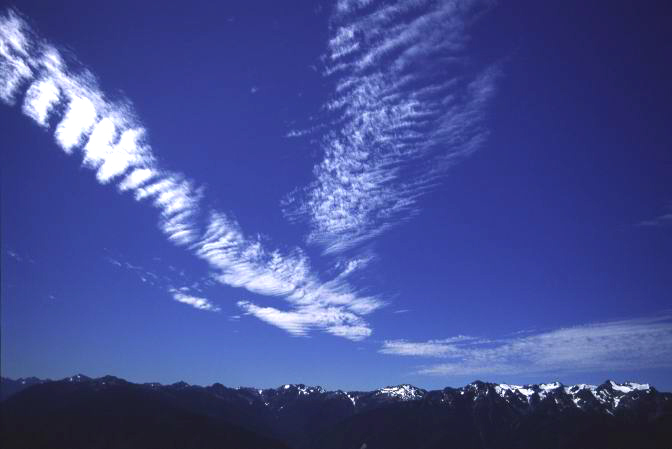
led photography tours with groups and each trip has been different.
This is a very large park with three
distinct eco-systems to explore. Photographers want to arrive at a wonderful
scenic spot at the exact time
when the lighting will render the scene at its best. And, as we photographers
realize, good light is fleeting.
Some of the most spectacular morning scenes can be found up the main
road leading from the town
of Port Angeles up to Hurricane Ridge. This means that we must leave
town around 5am and make the
drive up the mountains for a spectacular view and one that no photographer
would want to miss, just
for the sake of sleeping in. On most summer days, a thick cloud forms
above the water near Port Angeles
and as we drive up the Hurricane ridge Road we eventually climb above
it. There are several spots to
pull the car over and set up the tripod for a fantastic photo session.
I generally have two cameras set
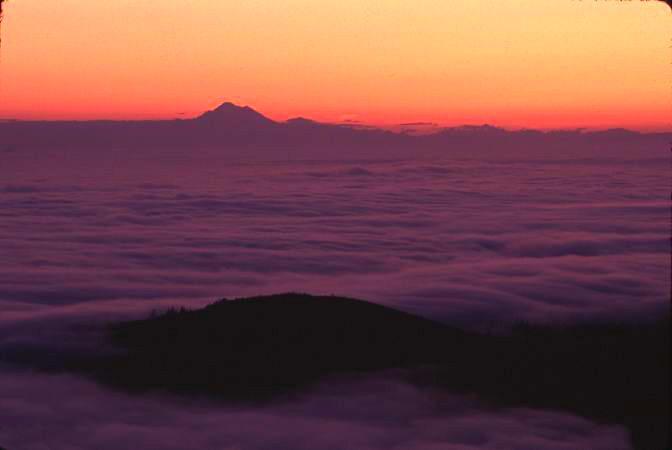
for this session. One camera has a 100 –
300mm lens and the other has a 24 – 70mm. This will allow me to
switch cameras onto the tripod and keep shooting – quickly. There
is a spot on the road that
has a grove of towering pines and a complete open break between the
trees that enables me to compose
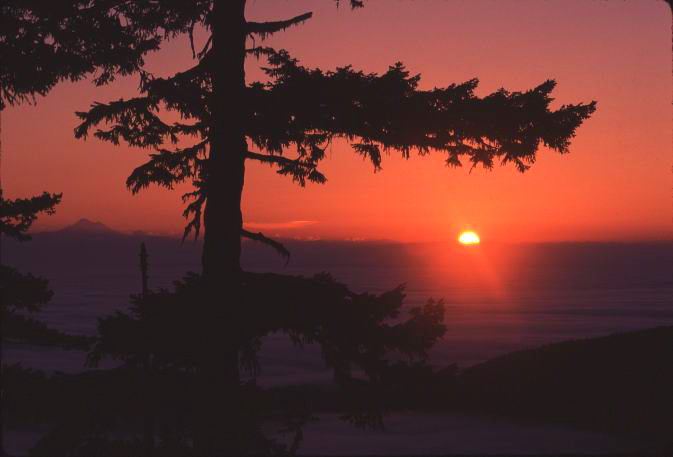
several scenes without moving very far. Once the sun appears, the light
changes so rapidly that it is a
challenge to get from one spot to the other, switch cameras and compose
new images on the same morning.
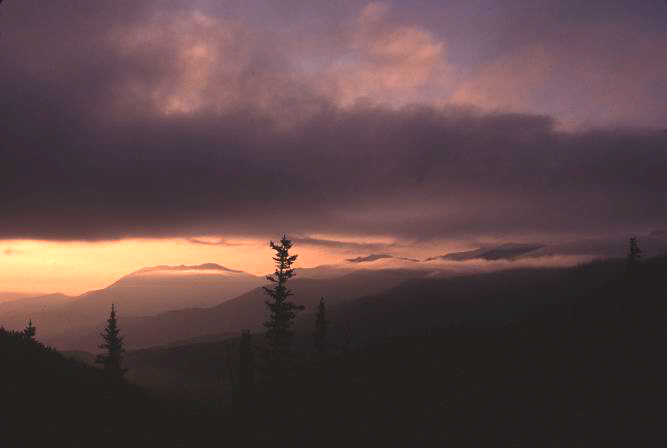
Once the light changes somewhat, we will move on up the mountain and
enter the alpine meadows
of Hurricane Ridge. Most of the time we will be greeted by several deer,
does with fawns and a few bucks
in velvet antlers. The deer in this park are so habituated to humans
that they allow a fairly close approach,
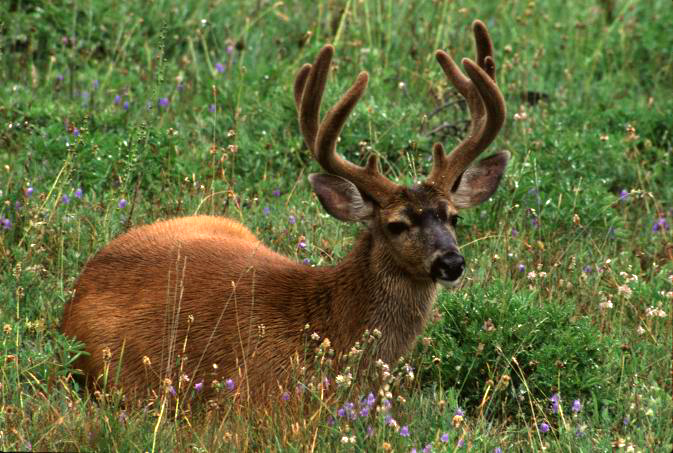
but more importantly to the photographer, they allow time to choose
a nice angle of approach for quality
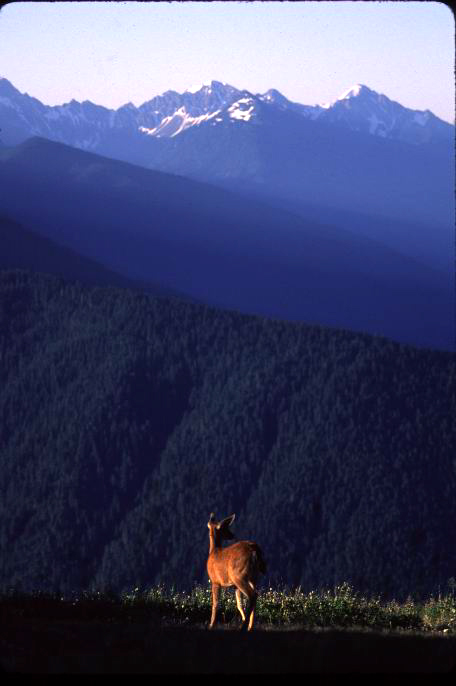 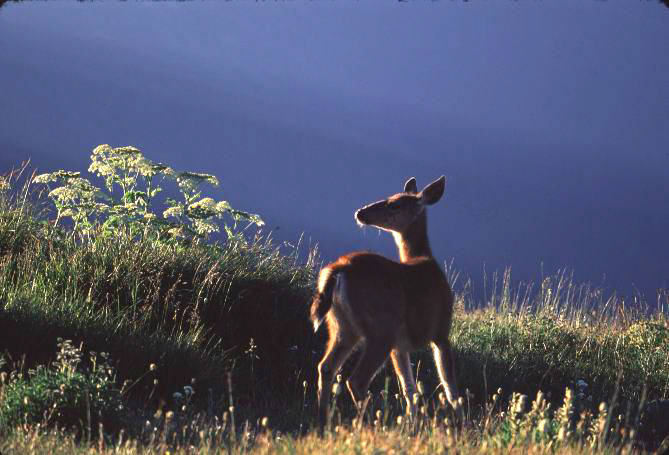
lighting. Up here on the ridge, one can create deer images with spectacular
scenery as a background. The
light in the morning radiates through crystal clear skies and beams
down upon the subject as if it is in
a photographic studio. It’s that perfect!
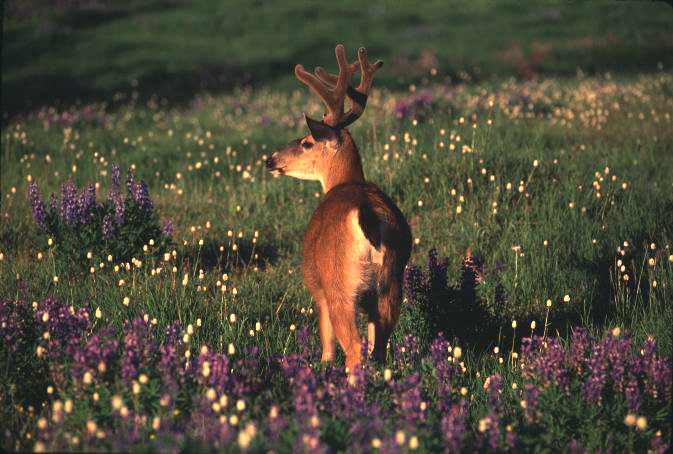
Following a full photo session with the deer, wildflowers and spectacular
mountain views, we can
pack up and head right back into Port Angeles for a filling breakfast.
Are we really late to eat? It’s
around 8:30 and we photographers have shot several rolls of film, experienced
some incredible scenesand now get to relax,chat and eat a hearty meal.
There is a place up on Hurricane Ridge where there is a large colony
of Olympic marmots that
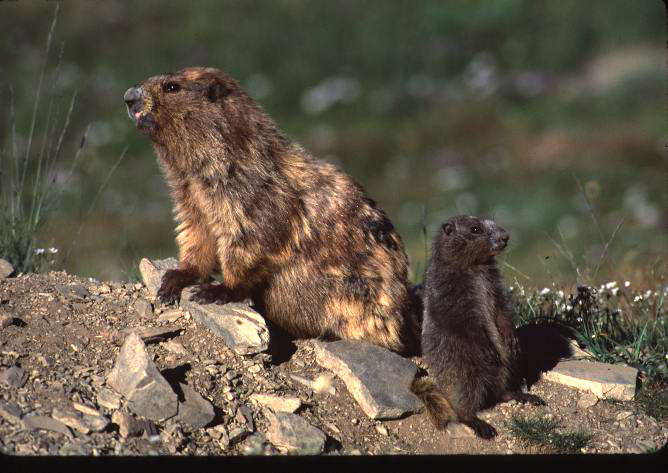
are really fun and a big challenge to get nice images as they scurry
between burrows. They can be found
along Obstruction Point Road, which winds its way through a thick area
of trees, then winds along some
high alpine meadows and terminates in a parking area where hikers begin
treks that can be as short as
several minutes or last several days. All along this road, the scenery
is breathtaking. The dirt road can also
be a bit scary with “dropoffs” of several hundred feet that
require some keen concentration while driving.
Once we arrive at the marmot colony and get out of the vehicle, the
little furry critters become wary.
They begin their alarm calls alerting all members of the colony that
danger lurks. Then they dive for cover
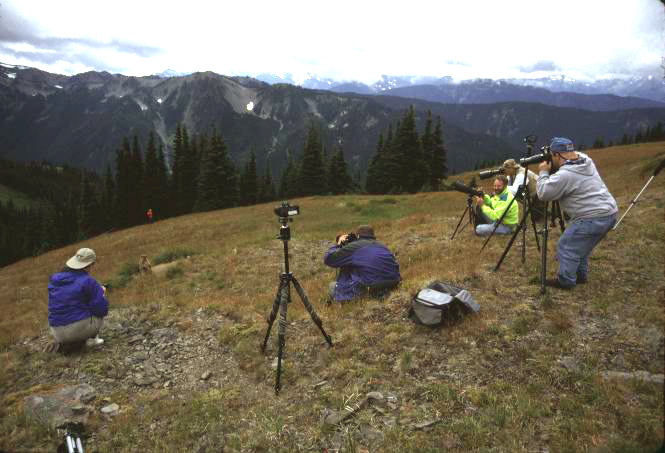
into their burrows for several minutes. This is the time to move quickly
forward, set the tripod and sit down.
This gives the photographer some time to place the camera with a telephoto
( I use a 400mm) onto the tripod.
I leave the legs nice and short and like to sit behind the setup.
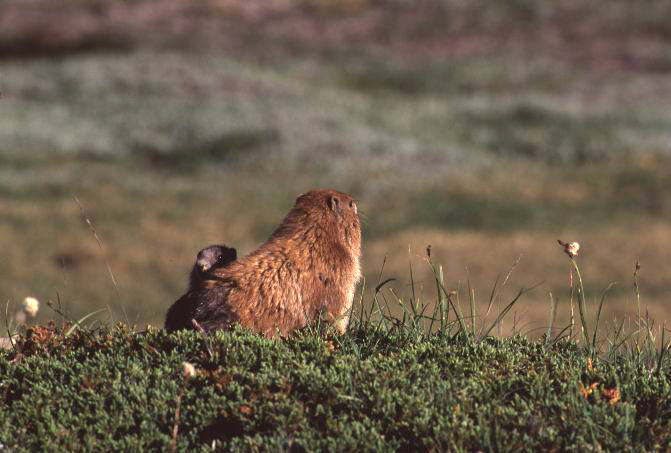
After awhile the little marmots become curious. They will pop up and
take a peek around for danger.
As long as the photographers are quiet and at a safe distance away,
the marmots begin to relax a bit. They
make fine subjects and the long telephotos fill the frame. Even with
a group of photographers closing in,
the little marmots tolerate the intrusion without too much annoyance.
Each time they dive in it is time to
move up a bit closer and sit quietly. Patience is the virtue in nature
photography and it applies here. Each
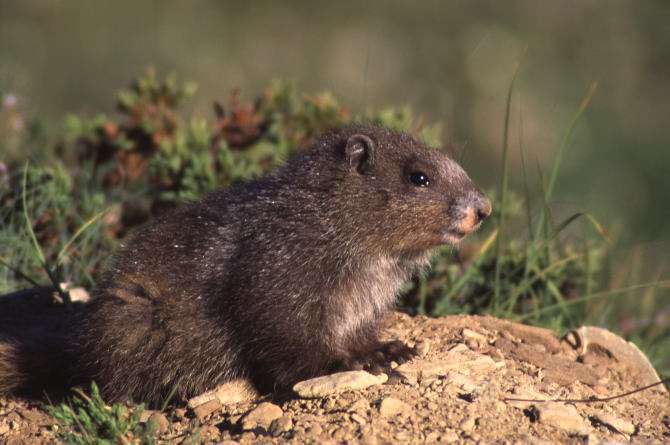 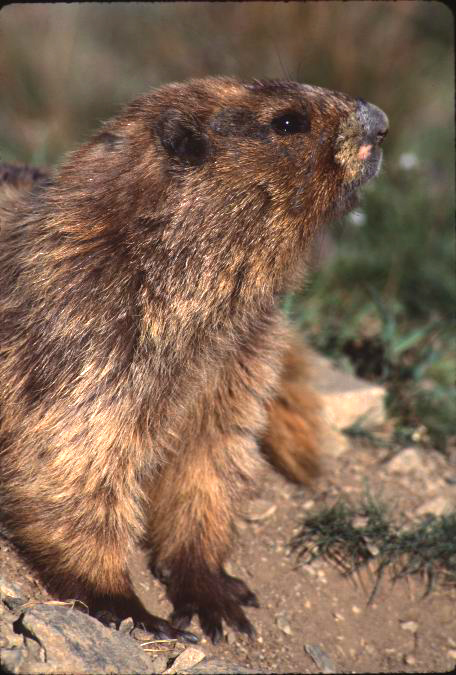
time the critters pop back up the camera/lens is just a bit closer for
some nice tight head shots. The babies,
who like their parents are really curious about these strange creatures
with three skinny legs, keep popping
up and sit close to mom and dad. This makes for some great Marmot “family
portraits.” On one of my
trips, I was able to move in so close to the burrow that I removed my
telephoto lens, placed the 24mm on
and when the curious marmot came up, I created a mountain scenic with
a marmot sitting in the foreground.
The afternoon is a great time to venture into the depths of the rainforest.
So, after eating a hearty
breakfast we can take a short break and then make the drive to The Hoh
Rainforest. Here we will
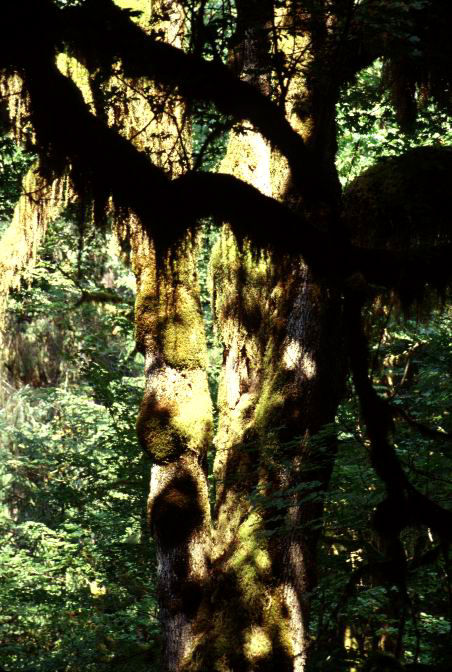
use our camera backpacks and use the tripods
as walking sticks or sling them over our shoulders. The light
is usually very dim in most areas deep under the canopy of the giant
trees, so a tripod is necessary for
long exposures. One of the nicest waterfall hikes is to Sol Duc falls.
This is an easy hike of about 1.6 miles from
the parking lot to the falls and takes the photographer through both
second growth and old growth
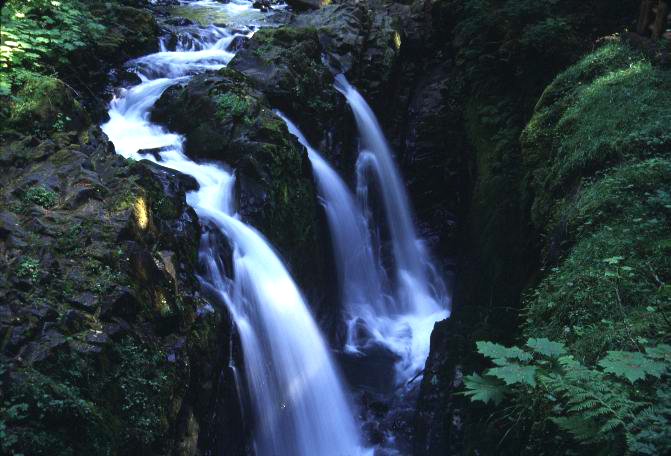
Douglas Fir and Hemlocks. This waterfall is very dramatic and can be
viewed and photographed from
several different angles. If the day is slightly overcast this will
be an advantage since the light filtering
through the canopy of giant trees will be even toned. A bright sunny
day will cast “hot spots” of light
causing the photographer problems of uneven light levels. Most waterfall
images display the water as a blur, which conveys the feeling of movement
andgives a feeling of serenity at the same time. To create this effect
set the tripod up for a nice compositionand frame the scene exactly
how you would want it. Check to see whether a vertical or horizontal
format
best suits the waterfall and then we must meter the scene. In this rainforest
the waterfalls are
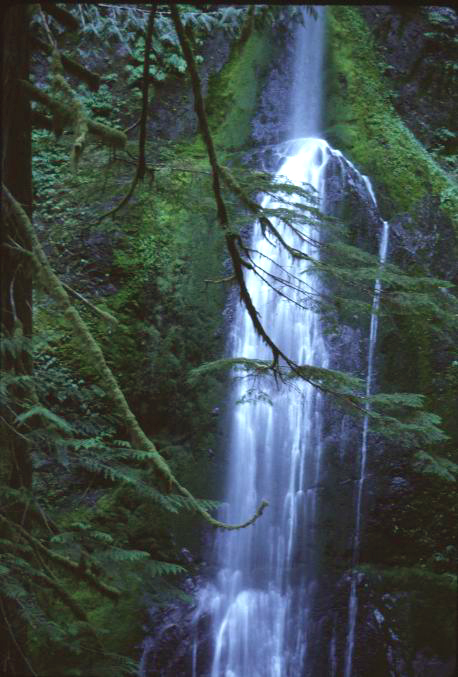
surrounded by lush green moss and ferns. These
are a nice medium toned color to take the meter reading from. You can
set the camera’s meter to center weighted and place the circle
at the green moss, lock that reading in and
return the camera to the desired composition. Use a very slow shutter
speed, below ¼ second. As you
make the shutter speed slower, you will be creating a more blurred water,
thus giving the scene the desired look.
The stream that feeds the Sol Duc Falls is exceptionally pretty to photograph.
Walk around above
the falls and use your zoom lens to create smaller images of water bouncing
off rocks, swirling patterns
and miniature rapids. This is a nice creative session, especially for
a novice, but one that all photographers will enjoy and learn from.
The interior of the rainforest has a myriad of scenes to delight the
eye. Moss grows on everything.
Ferns grow tall and decaying logs host hundreds of tiny seedlings that
will someday be the giants in these
woods. Here is where a macro lens will serve you well. There will be
tiny mushrooms and plenty of
insects here. Once again the diversity of Olympic is a photographers
delight and in the depths of the
rainforest one can spend a long time of creative expression.
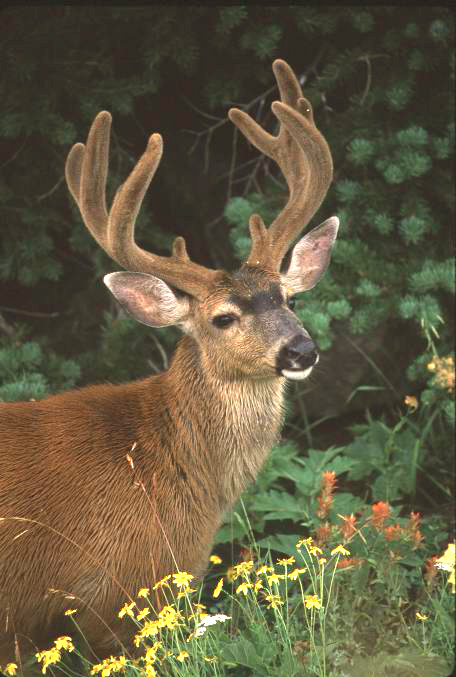 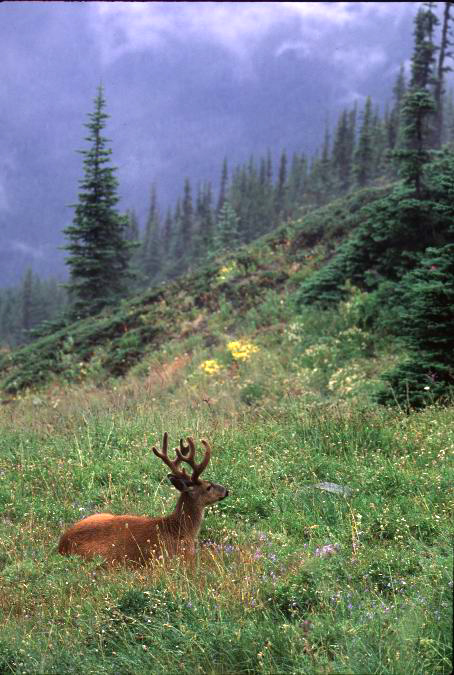
Olympic has about 50 miles of pristine shoreline and it is truly magnificent,
especially at sunset.
It is a long drive from the main portion of the park, so when we plan
this part of the trip we have to leave
in the early part of the afternoon. Generally I try to get a group over
there in the mid afternoon for some
exploration of the shore and then eat dinner early in a nearby restaurant.
After dinner, itas back to the
beach in plenty of time for the setting sun. There are several huge
rock formations known as “sea stacks” that protrude all
along the coastand they make fine subjects combined with a dazzling
sunset. The compositions are endless and everyone
places their tripods up with a variety of lenses to create their interpretation
of the seascape. While we
wait for the sun to drop down low, there are plenty of other scenes
to photograph here. Big and small.
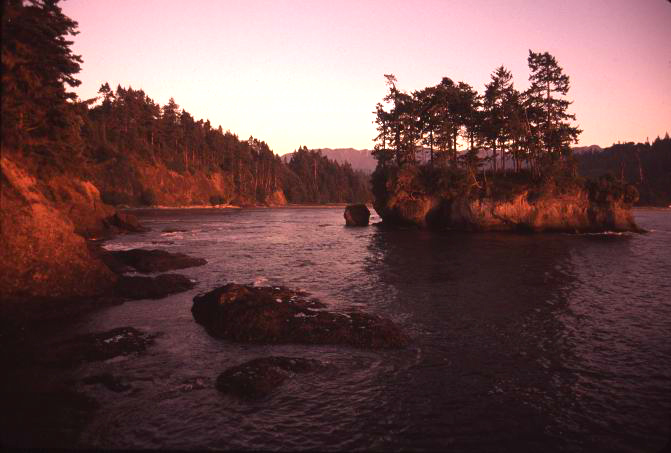
There are numerous tide pools with lots of marine life here. Birds,
mostly gulls and pelicans are all
around and can be approached for some nice images. But the real gem
is of course the sunset.
My favorite time to visit Olympic is the summer. This park is slightly
“out of the way” and even
in mid summer is not crowded. And if you get up real early and make
the drive up Hurricane ridge
above the clouds, you will find yourself all alone in a heavenly paradise.
Just you, the deer, the rising
sun and maybe a few other dedicated nature photographers.
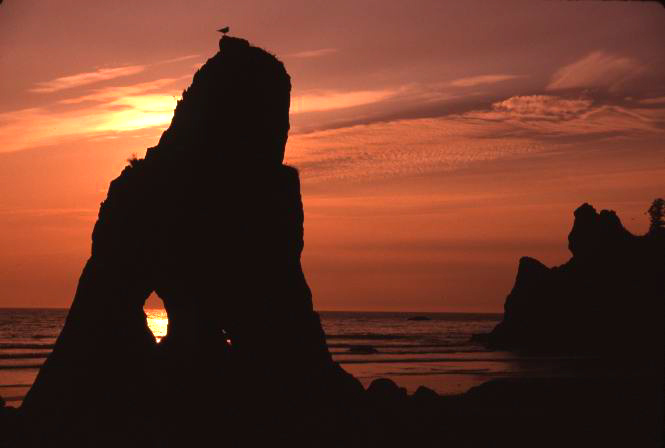
|























